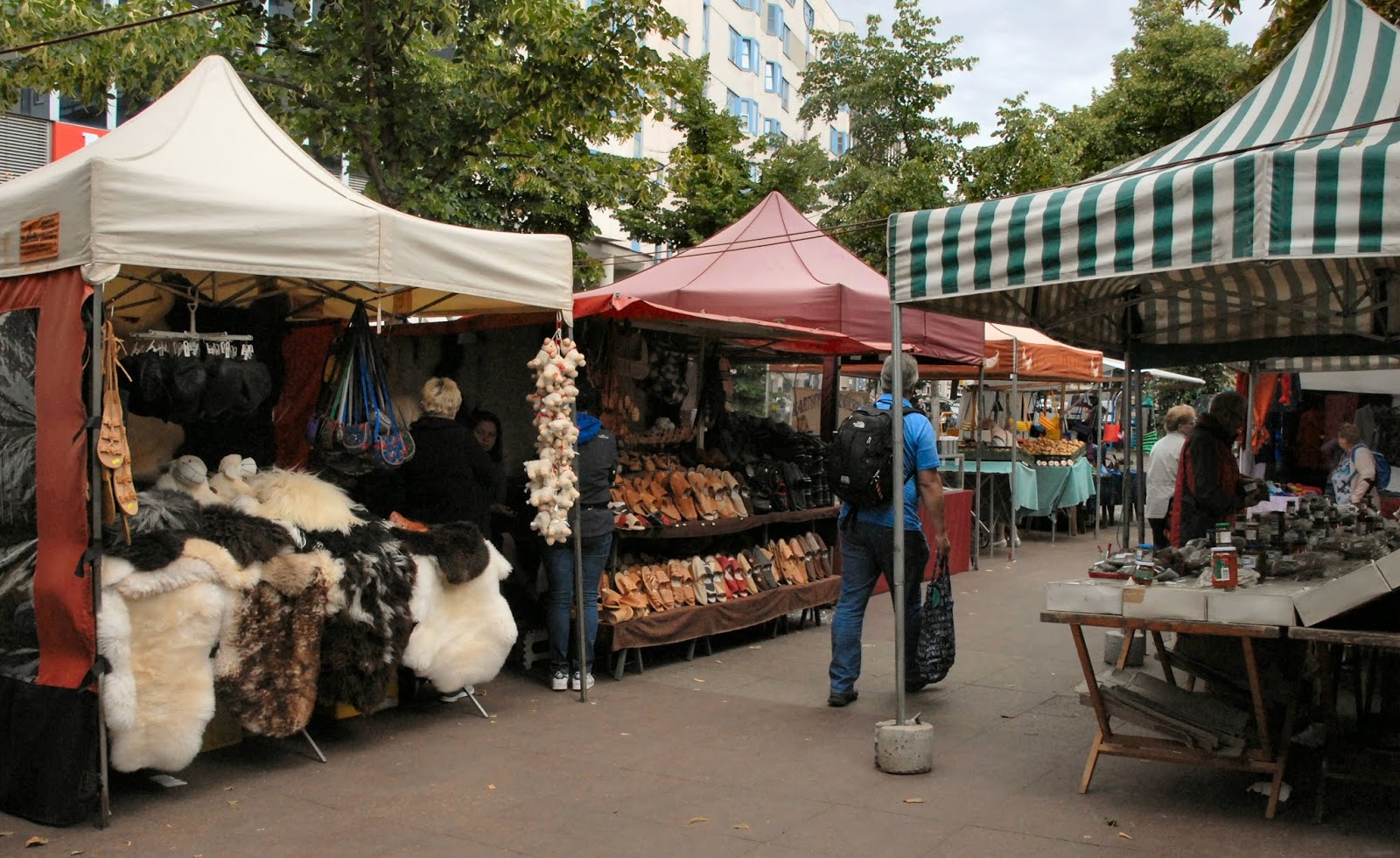Today we set off for a walk down the Kurfürstendamm, the street that was the heart of West Berlin during the days of the Berlin Wall, and is now the major shopping street in Berlin. Berliners often refer to it as the Ku'damm.
We walked out of our hotel, down to the square at the end of the street (Witternbergplatz),where we fond a little market going on!)


We turned west into Tauenzienstraße, which very quickly takes you to the Kaiser Wilhelm Gedächtniskirche (The Kaiser Wilhelm Memorial Church), and then turns a few degrees southward and becomes the Kurfürstendamm.
One thing we noticed on our walk throughout the day was the Buddy Bears. The symbol of Berlin is the bear, and the Buddy Bear has become an unofficial ambassador for Germany and a symbol of Berlin since 2001. These life-sized fibreglass figures have been used throughout the city to make various statements.
Just before we reached the Kaiser Wilhelm Gedächtniskirche, we came to the Europa-Center. This building was erected between 1963 and 1965, only a couple of years after the building of the Berlin Wall. It was presumably constructed to display the superiority of the Western way of life. Its high-rise block is 21 storeys tall, contains over 100 shops, and is topped by a huge rotating Mercedes-Benz symbol. Inside we found a wonderful cafe complex under a large glass dome, and a significant part of the Berlin Wall.




We walked down the Ku'damm as far as Konstanzerstraße before deciding to turn back, calling into some of the side-streets on the way. We were just enjoying the tree-covered avenue, the magnificent high-end shops, the ever-present street-side cafés, and the wide range of goods displayed in the shop windows.







When we got back up to the Kaiser Wilhelm Gedächtniskirche, we decided to go in. The original church, built in the 1890s, was badly damaged in a bombing raid in 1943. Between 1959 and 1963 a new church was built, a church with an attached foyer on one side of the damaged spire of the original church, and a separate belfry on the other side. The ground floor of the original spire has been made into a memorial hall.
Berliners have a habit of giving quirky nicknames to buildings. The original damaged spire of the church is called "der hohle Zahn" ("the hollow tooth"), and the blue glass brick new church with its lower octagonal church and taller hexagonal belfry, "die Lippenstift und Puderdose" ("the lipstick and powder box").
The belfry is currently being refurbished, and is under wraps. But we were able to go into the church itself. The interior has this wonderful blue glow, with the building's glass brick construction. The figure of the crucifix above the altar dominates the whole church. And if you go forwards and turn around, you see a magnificent organ occupying the back wall.


Displayed inside the church is the original of the Stalingrad Madonna, a charcoal sketch drawn by a German soldier, Kurt Reuber, in 1942 during the Battle of Stalingrad. Copies of it are hung in a number of other cathedrals, and there are even sculptures based on this image.


We also went into the memorial hall under the old spire. There's a lot of cracking, the result of the bombing, but you can see how magnificent the church used to be. The floor mosaics are incredible. We were particularly taken with a rendition of St George and the dragon.


We then walked back along Tauenzienstraße, passing the huge store, Kaufhaus des Westens, usually referred to as KaDeWe (i.e KDW), before turning back into Ansbacherstraße, back to the hotel.
* I still have a suitcase in Berlin.















No comments:
Post a Comment